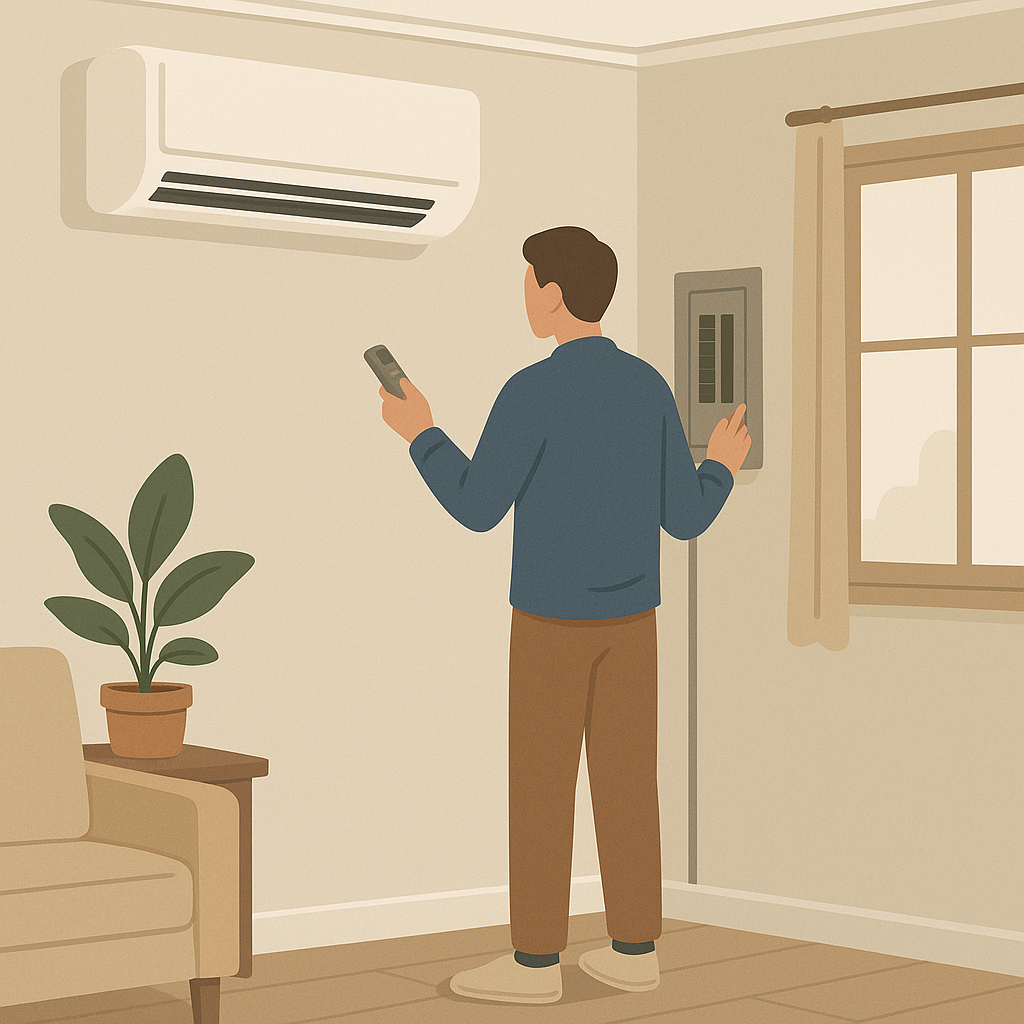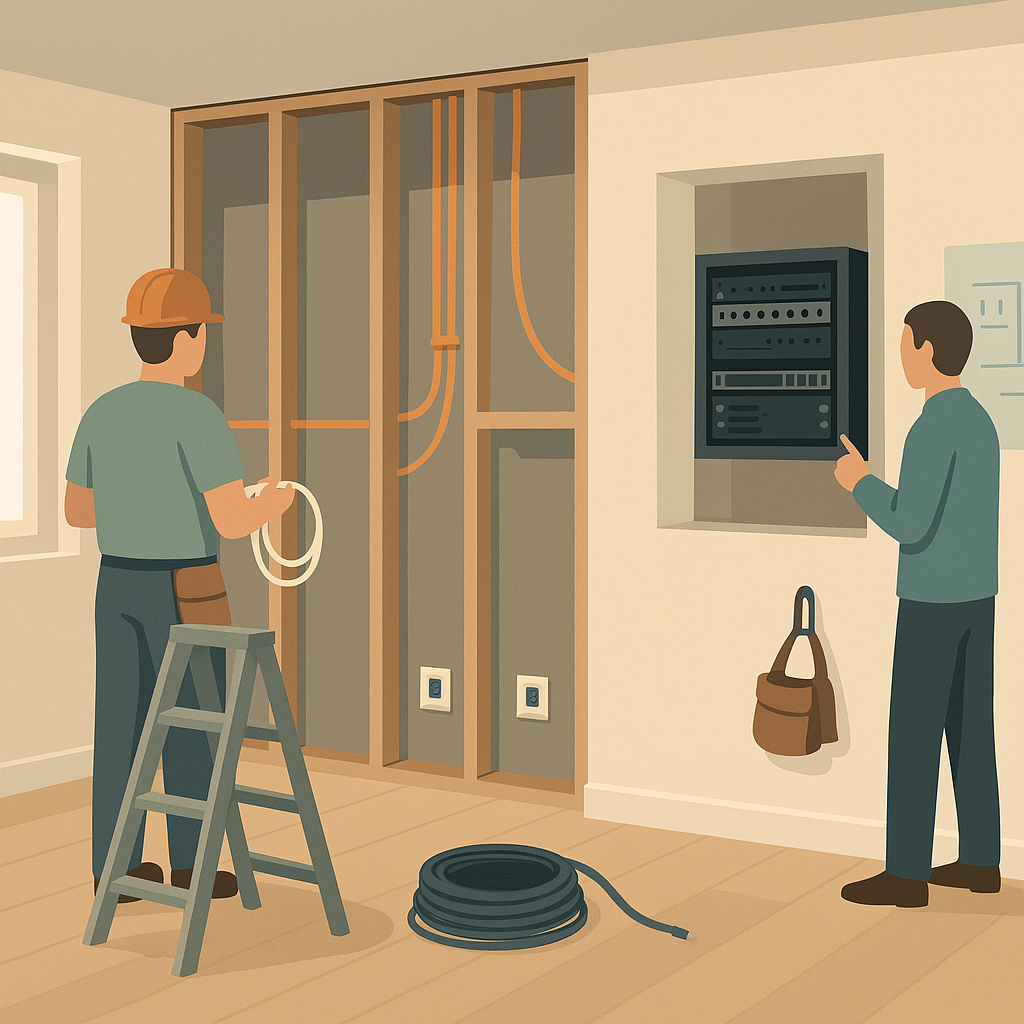The Mini-Split Mistake I Wish I'd Known Before Installing

- 1Mindset Shift: The Gear Isn't the Problem, the Plan Is
- 2Real-Life Story: What Worked and What Didn't
- 31. We Went Multi-Zone… and Learned the Hard Way
- 42. We Didn't Plan for Rural Power
- 5What I'd Do Differently (And You Still Can)
- 6Bonus Tip: Ducted Zoning Can Be Smart Too
- 7Final Nail in the Wall
- 8Need Help Thinking Through Your HVAC Setup?
We chose mini-splitsA ductless heating and cooling system that allows independent temperature control in individual rooms without connecting to the home’s main HVAC system because they’re efficient, flexible, and whisper quiet.
They’ve worked well in our home, even through a 2°F winter night. But they also came with a few surprises. Not the good kind.
No one told us what to watch for. Not the HVAC contractor. Not the manuals. Not even the YouTube “experts”.
So here’s what I wish I’d known before installing our Multi-ZoneA mini-split setup where one outdoor unit powers multiple indoor units, allowing for separate temperature control in different rooms, but all must run in the same mode (heat or cool) at the same time system, and what I’d do differently if I had the chance.
Mindset Shift: The Gear Isn’t the Problem, the Plan Is
Most folks think picking the right system is the hard part. But that’s only half the equation.
How you configure your setup matters just as much as what you install.
Mini-splitsA ductless heating and cooling system that allows independent temperature control in individual rooms without connecting to the home’s main HVAC system aren’t plug-and-play. They’re more like a toolbox, you have to know when and how to use each piece.
The system itself isn’t flawed. But some of the assumptions people make about it are.
Real-Life Story: What Worked and What Didn’t
We used mini-splitsA ductless heating and cooling system that allows independent temperature control in individual rooms without connecting to the home’s main HVAC system in:
- Our garage
- A first-floor bonus room
- The room over the garage
They’ve been solid performers. Even in freezing temps, they kept those rooms warm. No noisy ducts. No energy spikes.
No regrets about choosing them.
But we made two key decisions that came back to bite us.
1. We Went Multi-ZoneA mini-split setup where one outdoor unit powers multiple indoor units, allowing for separate temperature control in different rooms, but all must run in the same mode (heat or cool) at the same time… and Learned the Hard Way
One outdoor unitThe main component of a mini-split system that sits outside the building and houses the compressor and condenser; it connects to one or more indoor units (heads) to provide heating or cooling. powering several indoor headsThe indoor part of a mini-split system that mounts on a wall or ceiling and delivers heated or cooled air to a room; each head can usually be controlled independently.? Sounds smart.
Except no one told us this:
All the headsThe indoor part of a mini-split system that mounts on a wall or ceiling and delivers heated or cooled air to a room; each head can usually be controlled independently. have to run the same mode, heat or cool.
You can’t heat one room and cool another at the same time. And “Auto modeA setting on mini-split systems that is supposed to automatically switch between heating and cooling as needed, but often causes confusion or erratic operation in multi-zone setups”? It confuses the system so badly it might as well flip a coin.
That means:
- Sun-facing room too hot?
- Shaded room still chilly?
- Too bad. Pick one.
If someone had explained this before install, I might have chosen single-zone unitsA mini-split setup where each indoor unit is paired with its own outdoor unit, allowing independent operation and mode selection for each room instead. But by the time we realized it, the drywall was up and the checks were cashed.
2. We Didn’t Plan for Rural Power
We live in the mountains. Our voltage tends to wander. Mini-splitsA ductless heating and cooling system that allows independent temperature control in individual rooms without connecting to the home’s main HVAC system hate that! Ours shut off randomly, often multiple times a day.
I’d reboot one head so the others would come back online. It was maddening. And it kept happening until we made two upgrades:
- Buck/Boost TransformerA device that stabilizes voltage by either increasing (boosting) or decreasing (bucking) the incoming electrical supply to stay within the optimal range for sensitive equipment like mini-splits: Keeps voltage in the 210–230V sweet spot. Ours cost nearly $500 (I installed them). If you have them installed you are looking at around $1,000. It’s worth it though.
- Surge ProtectionA device that protects electrical equipment from voltage spikes by cutting power or diverting excess energy, preventing damage to sensitive electronics like mini-splits: Cuts power if there’s a spike. Protects the system from frying itself.
Now everything runs smooth. But I wish I’d known to include these from the start.
What I’d Do Differently (And You Still Can)
If I were doing it again, here’s what I’d change:
- Stick to single-zone unitsA mini-split setup where each indoor unit is paired with its own outdoor unit, allowing independent operation and mode selection for each room. Each room gets its own control. No mode conflicts. No surprises.
- Budget for voltage regulation. Especially if you’re rural or on older infrastructure.
- Add Surge ProtectionA device that protects electrical equipment from voltage spikes by cutting power or diverting excess energy, preventing damage to sensitive electronics like mini-splits to every major system. HVAC, appliances, smart home gear. It’s cheap insurance.
And one more thing:
I’d ask a lot more questions up front. Because if your contractor can’t explain how your system actually works, it might not be the system that’s the problem.
Bonus Tip: Ducted ZoningA traditional HVAC setup where a central system uses dampers in the ductwork to control airflow to different rooms or zones, allowing individual thermostats for each area Can Be Smart Too
In the rest of our house, we use a central heat pumpA whole-house heating and cooling system that uses a single outdoor unit and ductwork to distribute conditioned air throughout the home. But we wanted room-by-room control, especially for bedrooms.
So we added a zoned duct systemAn HVAC configuration that uses a network of ducts and dampers to direct airflow to specific rooms or zones, allowing each area to be heated or cooled independently, often with its own thermostat. with dampersAdjustable plates or valves inside ductwork that regulate airflow to different rooms or zones in an HVAC system, allowing for customized temperature control.. Each bedroom has its own thermostat. Total comfort. Minimal fuss. And way better than arguing about the hallway temp.
Would a mini-splitA ductless heating and cooling system that allows independent temperature control in individual rooms without connecting to the home’s main HVAC system be more efficient? Maybe. But for a house already using ductwork, zoning was a great middle ground.
Final Nail in the Wall
Mini-splitsA ductless heating and cooling system that allows independent temperature control in individual rooms without connecting to the home’s main HVAC system are a great tool. But like a powerful truck, they only shine when you use them the right way.
So before you commit:
- Ask how each zone will actually work
- Plan for power quirks, especially off the beaten path
- And design with real life in mind, not just what looks good on paper
Because in home design, the real expense isn’t just what you buy.
It’s what you have to redo when the plan didn’t fit the life.
Need Help Thinking Through Your HVAC Setup?
I offer one-on-one consults to help you design your new home or renovation. We can create a future ready HVAC plan that fits how you live, not just how your builder wires it. We can talk about comfort zones, smart upgrades, and how to avoid the kind of regrets I just described.
Or download the full 10-Step Guide to Future-Proofing Your Home to see what else might be worth planning before you break ground.
